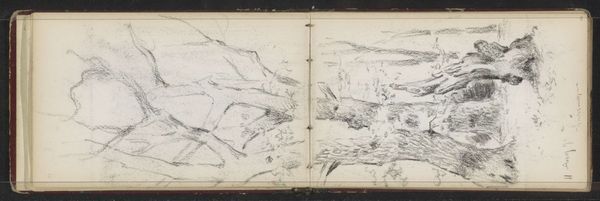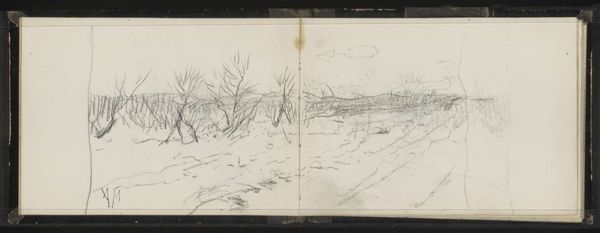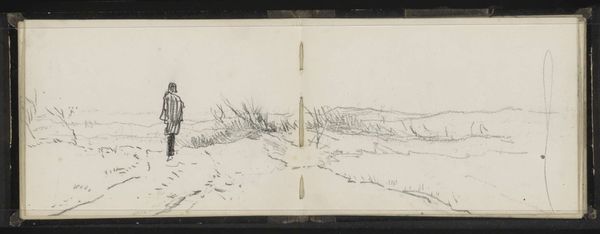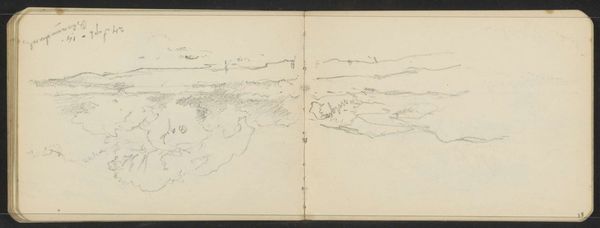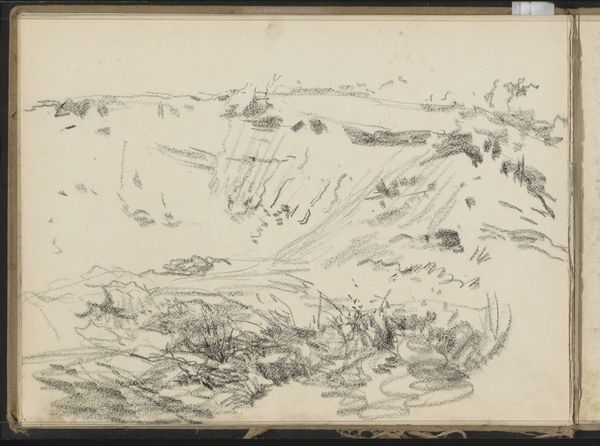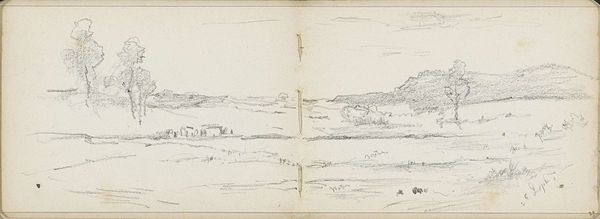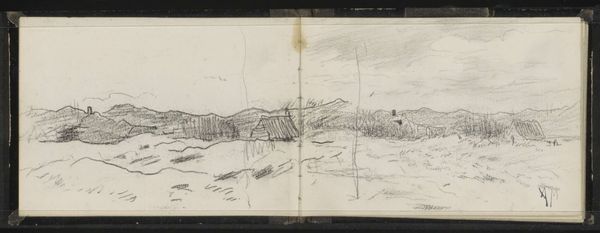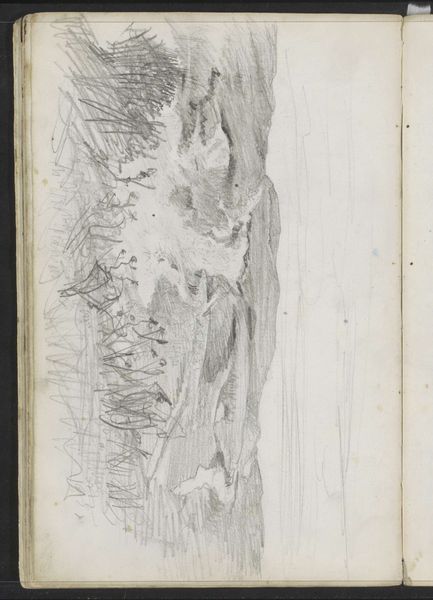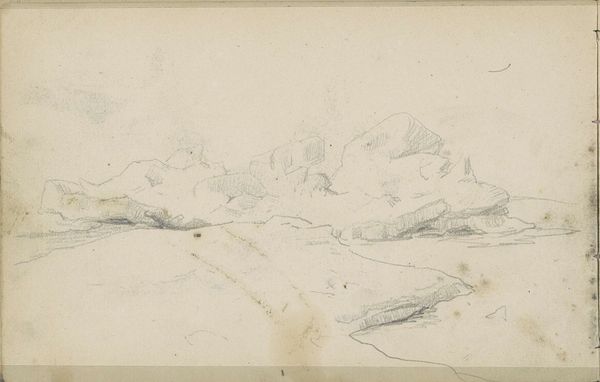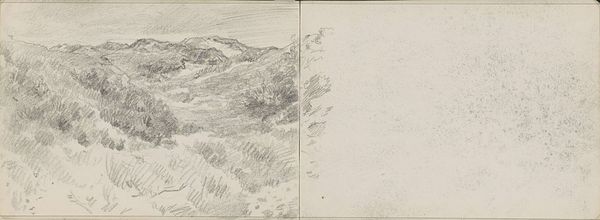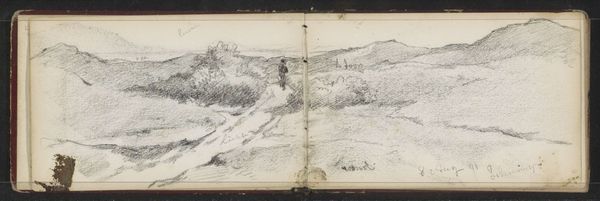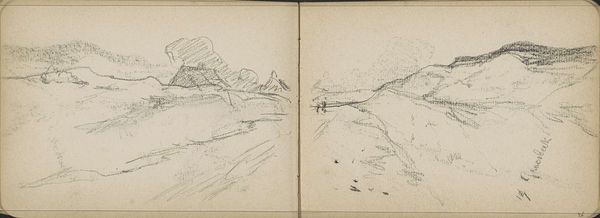
drawing, pencil
#
drawing
#
dutch-golden-age
#
landscape
#
figuration
#
pencil
#
horse
#
realism
Copyright: Rijks Museum: Open Domain
Editor: Here we have "Figures with Horse-Drawn Carts in a Dune Landscape", a pencil drawing by Willem Bastiaan Tholen, likely made between 1870 and 1931. It feels very sparse and open; you can almost feel the wind. What compositional elements strike you as significant in this piece? Curator: Note how Tholen’s arrangement of the visual elements—lines, tones, and implied forms—creates a distinct spatial structure. Consider the distribution of light and dark across the page, and how that directs our eye. Notice how the horizon line, broken and varied, generates a sense of depth. Where does your gaze primarily focus, and what characteristics dictate that focus? Editor: I think my eye is drawn to the lower right corner with the horses and carts, since it has the most defined pencil strokes and a tonal range that isn’t present in the upper part of the drawing. Curator: Precisely. The darker, more heavily worked areas establish a visual weight, anchoring that corner of the composition. How would you assess the impact of the division between the sketch at the top, and the other sketches shown across the drawing? Editor: The horses and cart look more schematic and gestural. This almost detaches the small vignette from the implied landscape and foreground. Curator: The deliberate separation allows Tholen to play with different registers of representation. The artist utilizes contrast not merely for representational purposes, but as a device to highlight the interplay between surface, depth, and spatial organisation within the artwork. It emphasizes a sense of fragmentation and invites reflection. Editor: So, it's not just a landscape study but an investigation into different modes of seeing and depicting? Curator: Precisely. Through close attention to the formal elements of line, tone, and composition, we gain insight into the artist's intellectual and perceptual exploration of space and form. Editor: Thanks, that's given me a new perspective.
Comments
No comments
Be the first to comment and join the conversation on the ultimate creative platform.
